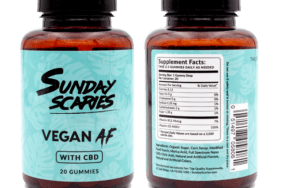Now that organic produce and healthier food options are more readily available than ever before, it has made grocery shopping that much more confusing in the process. With the availability to buy everything from out of season fruit to fair trade chocolate to T-shirts made with organic cotton, more expensive options can make shopping complicated, even if the effects are overall better for our health and the environment.
Not only could an all-organic diet be rough on your budget (be prepared for grocery bills to double), but there are often other factors at stake. While organic farming is better for the environment, is it better for the earth if you buy an organic apple with a big carbon footprint or an apple from the farm down the street that was grown using chemical pesticides? Is it worth paying twice as much for an organic vegetable when you don’t even know if the pesticides used on the cheaper variety are dangerous? Then there’s the recently hyped danger of genetically modified organisms (GMOs) which aren’t going to be labelled in the U.S. anytime soon.
Basically, it comes down to the question: do you have the time to research every item you place in your grocery cart? The answer is probably no. Luckily, you can form a smart, educated shopping plan without becoming a biochemical engineer.
Becky Ofrane, who is a biochemical engineer and a risk assessor with the Environmental Protection Agency, says you have to choose what’s important to you. “For me, I don’t want to ingest extra hormones [like artificially grown hormones found in industrial dairy farming] as a young woman of child bearing age with a child. Other people might care more about protecting the environment, in which case you would probably choose not to eat meat because of livestock methane emissions. Someone else might say it’s important to me that the animals are treated well,” Ofrane said. “So it’s not necessarily worthwhile splurging on the most expensive eggs just because they have all those labels on them if all those things aren’t important to you.”
Tools for Easy Education
If you are concerned about the pesticides in your food but can’t afford to go all organic, you’ll want to download one of the many apps for easy access to “The Dirty Dozen” fruits and vegetable determined by the Environmental Working Group to have the highest concentration of pesticides linked to cancer, birth defects and other health problems. The EWP has its own Dirty Dozen app for iPhone and Android, and Organic Revolution and Organic Food Connected in the Google Play Store are both good resources. These apps also identify the “Clean 15” produce items that use the fewest dangerous pesticides which you can probably buy non-organic with less risk than their “dirty” counterparts. (The EWP also has a whole list of other consumer guides here.)
GMOs are another hot-button issue in the media lately. Since we cannot rely on the U.S. Food and Drug Administration to label GMOs (though many other countries are starting the process), we have to look outside of food labels to know what products have been genetically modified.
“I think people would be surprised to find out a lot of the fruits and vegetables have some form of genetic modification that they don’t even know about, so there’s no point in saying, ‘I’m not eating any GMOs,’ you probably are.” Ofrane said. “There isn’t a lot of regulation around it so we don’t really know what we’re eating or how bad it is. There’s genetic modifications at the seed level, so there’s nothing you can do about it; sometimes seeds are genetically modified so that they can grow better in the environment.”
For more information on GMOs, and especially on public policy and consumer advocacy surrounding the subject, check out Food Democracy Now on Facebook. If you want to avoid GMOs at the grocery store, download the Center for Food Safety’s True Food Network app for iPhone and Android, or ShopNoGMO for iPhone.
“If you can get food from a moral local, smaller source [like a farmstand or farmer’s market] that’s great, then you’re probably avoiding GMOs,” Ofrane said. “But just because something is labeled GMO doesn’t mean it’s bad for you.”
This brings us to the benefits of buying local.
Buying Local
Most environmental safety and human health advocates agree that industrial farming is the source of many of the problems and dangers in the food we eat. If we could all eat meat, produce and dairy locally produced from small farms not owned by large corporations, it would be easier to know what we’re eating. Unfortunately, that isn’t possible for most people.
Sometimes it’s due to economics: it’s more expensive to farm with fewer chemicals and with more care for animals, or industrial farms would do it too. Another major problem is geography and “The Grocery Gap.” This has to do with studies finding that 20% of rural counties in the United States live 10 miles or more from a grocery store. These residents also have less access to transportation, leaving them in a “food desert” where their only retail food shopping option is a convenience store, not known for healthy whole foods. Also, “low-income zip codes have 25 percent fewer chain supermarkets and 1.3 times as many convenience stores as middle-income zip codes,” according to PolicyLink.
Lucky for those of us in urban and suburban areas who are in middle to upper income brackets, shopping local can be a great option for buying healthier foods. Local Harvest is an easy resource for finding farm markets and community supported agriculture (CSA) programs in your area.
“I like to shop local because you’re supporting smaller farms, and we need more of those to last, or else everything is going to be an industrial farm,” Ofrane said. “Getting an organic label on your farm [can be too expensive and complicated] for a small farm.” She says typically, produce you’re getting at a farmer’s market or a farm stand is not from an industrial farm, and you can always ask since you’re buying directly from the grower. Grocery stores also label where many foods come from, and especially if you make an effort to eat in-season produce, you can buy more produce grown in your area if you just pay attention to labels.
The simplest advice Ofrane can give is, “Just look for food that looks like real food.”








